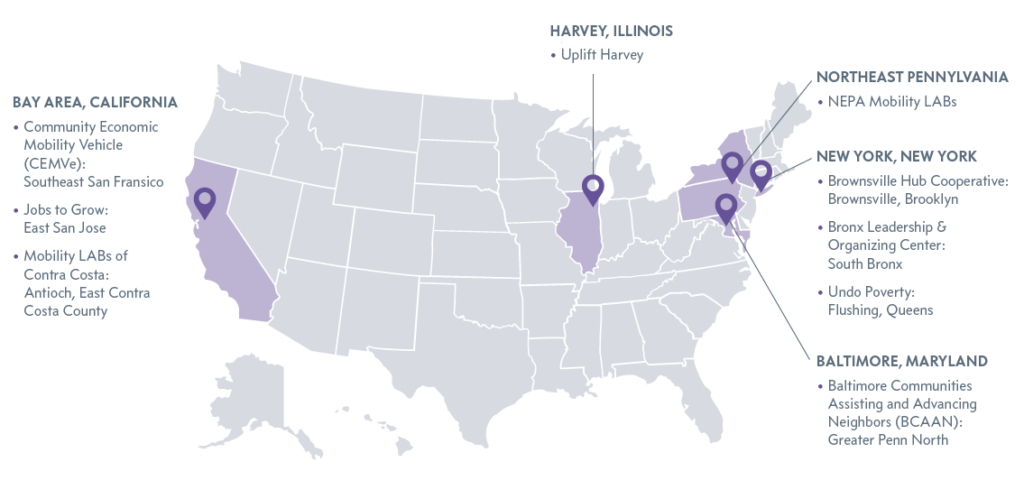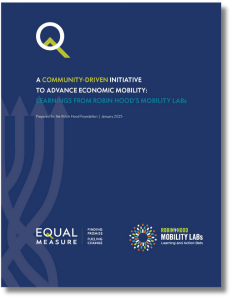Through Robin Hood’s Mobility Learning and Action Bets (LABs), nine communities across the country implemented community-driven approaches to advance economic mobility. Equal Measure’s culminating report looks at the history, solutions, and recommendations from the five-year initiative.
Mobility LABs focused on three dimensions of mobility from poverty—economic success, power and autonomy, and belonging and inclusion—for a long-term, comprehensive approach to local transformation. Throughout the initiative, the nine anchor partners sought to authentically engage their communities, building relationships with other community-based organizations and residents to best meet community needs.

The Mobility LABs initiative engaged nine anchor partners in different regions across the country.
Through these multisector partnerships, anchor partners provided direct services for adults and young people and addressed broader efforts around community disinvestment, including through changing narratives to reduce stigmas about poverty. Their work progressed despite disruptions from the COVID-19 pandemic in the planning period.
The Mobility LABs initiative’s commitment to community-driven systems change and innovative approaches uncovered multiple recommendations for driving economic change, including:
- Creating the conditions for community engagement, such as offering incentives and opportunities for resident feedback
- Understanding the racist and extractive practices that caused community disinvestment
- Adopting a developmental evaluation approach to respond to the nuances of tracking economic success
“Working with community is complex and requires a lot of support and investment that doesn’t often exist in the way that it needs to.” —Robin Hood staff
Based on the learnings from the five-year initiative (2019–2024), Mobility LABs also revealed several calls to action for funders that want to invest in economic mobility:
- Trust your community partners.
- Engage in unrestricted, long-term funding.
- Embrace a learning approach.
